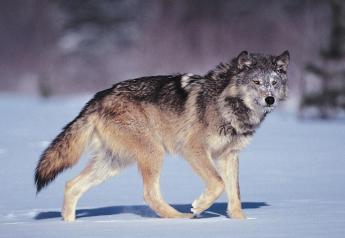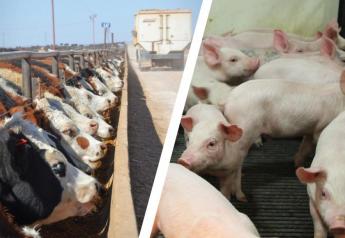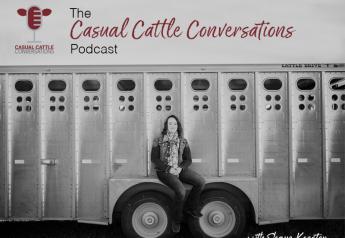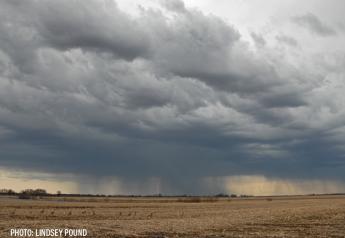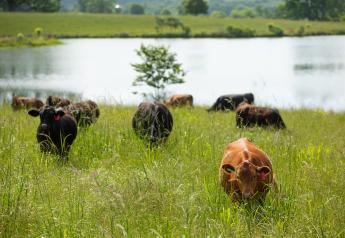Plan Ahead for Heat Stress in Cattle

As we move into hotter weather, cattle managers need to be thinking about heat stress in their stock and how it can be mitigated.
By: David Hartman, Extension Educator, Penn State
Whether in a pasture or in a feedlot, cattle can suffer heat stress. Environmental conditions contributing to heat stress include minimal cloud cover, little or no air movement, high relative humidity, and high overnight low temperatures (above 70°F).
Researchers at the Meat Animal Research Center (MARC) have identified four main areas that influence any particular animal’s response to heat stress. Those four factors are genetics, health, production status, and previous exposure to heat.
Lighter colored cattle generally show less heat stress than darker colored breeds. Research has shown that in a group of genetically closely related cattle with different hide colors, cattle with dark hides had a 2° F higher core body temperature. And, calmer cattle have been shown to be more heat tolerant than excitable ones.
MARC research has shown that feedlot cattle that have been treated for pneumonia any time between birth and slaughter have a 10.5% higher respiration rate under stressful conditions than their untreated peers. Another good reason for implementing pre-conditioning programs for calves.
Heavy feedlot cattle are at more risk. Very young and very old animals are at more risk.
What cattle are eating plays a role in heat stress. Excessive protein levels can be problematic. This could occur in pastures and in feedlots. The excess nitrogen in the protein must be biochemically removed and excreted via urine, using energy and generating heat in the process. Also, there are differences between cattle being fed grain versus hay. Feeds such as corn contribute less to the heat of fermentation than hay. High quality forages produce less heat of fermentation than low quality forages.
With all this said, what can we do? Some of these things we can control and some we can’t.
Shade is important. Most of our feedlots in this part of the country have a fair amount of space under roof. Provide shade to pasture cattle during hot weather. Pasture managers need to recognize that allowing cattle to lounge in shade all summer (when it may not be necessary) will, over time, result in ‘nutrient creep’ from the pastures to shade areas and also result in less efficient utilization of pasture.
Water intake is critical. Ambient temperatures in the mid-90s can increase cattle water requirements by 2.5 times compared to 70° F. Water trough capacity and refill rate become very important in this situation. Most experts agree that cattle need 3 linear inches of water tank space per head during hot weather. If necessary, introduce additional water tanks ahead of a heat wave so cattle can get used to them. Make sure that refill rates are adequate so that cattle intake does not exceed refill capacity. One guideline I found was that a 1000 pound animal needs about 1.5 gallons of water per hour during hot weather.
Timing of feeding can make a difference. Not a lot we can do about that with pastured cattle, but a feedlot manager may be able to tweak feeding times to allow more of the heat of digestion to occur during the lower nighttime temperatures.
If cattle are in a barn, provide adequate ventilation. This may involve opening up all doors and windows, adding fans, or providing access to an outside pen with shade.
Take action to control flies. This involves not only applying repellants and control products, but also eliminating fly breeding areas. Biting flies can cause cattle to bunch up which reduces evaporative cooling via air movement. Fly problems can affect both pasture and feedlot cattle.
If at all possible, try to avoid working cattle during extreme heat. Schedule any handling to be done first thing in the morning as daylight allows. Working cattle in the evening is not recommended as cattle are still dissipating heat from the day.
A livestock weather hazard guide is available on the internet at the Noble Foundation website.


